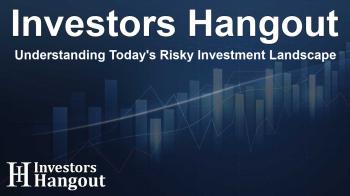Understanding Today's Risky Investment Landscape

The Most Dangerous Era in Investing History
As we navigate today’s financial landscape, many experts believe we are in what could be termed the most precarious period in history. Market dynamics are heavily influenced by structural distortions and valuations that seem out of touch with reality. This leads to an environment where investors often make decisions based on trends rather than sound fundamentals.
The dominance of passive index investing significantly shapes this landscape, steering capital into funds that prioritize market capitalization. This mechanism results in extreme valuations, as reflected by the S&P 500 trading at significantly high multiples compared to earnings.
The implications of this trend are multi-faceted and alarming. During periods of market mania, fundamentals become irrelevant in the short term. Yet, they play a crucial role in forecasting long-term outcomes. Current valuations raise questions about whether this era could reflect greater dangers than previous market peaks.
The Role of Passive Investing in Market Dynamics
Passive investing strategies have surged to prominence, with index funds and ETFs now encompassing more than half of U.S. equity ownership. These vehicles allocate capital based purely on size, neglecting key factors such as valuation and quality of business. This has profound implications for investors, as capital tends to flow into the largest companies, creating an unintentional feedback loop where stock prices inflate driven by inflows.
Furthermore, the landscape of diversification has changed dramatically. Many investors erroneously believe they have diversified portfolios through various index funds. However, overlaps in mega-cap stock holdings can increase individual and systemic risks, masking real concentration hazards.
Understanding Market Speculation: Historical Context
Speculative manias are deeply rooted in financial history, often recurring with different assets and technologies. For instance, today's market bears resemblance to the speculative environment of the 1920s, where investment trusts offered the allure of easy wealth while harboring hidden risks. Modern counterparts, like certain private equity funds or crypto-related investments, echo this pattern by presenting seemingly lucrative opportunities layered with complexity and risk.
In recent years, firms have begun deploying strategies that mirror our past with leverage masked by sophisticated marketing. For instance, companies like Michael Saylor’s firm have turned to Bitcoin in a significant way, while platforms like Robinhood introduce retail investors to risky products lacking proper safeguards. These developments are reminiscent of historical financial bubbles, revealing a troubling trend toward the illusion of stability amidst fragile structures.
Approaching Investment in the Most Dangerous Era
Given the context of an unstable market, it is essential for investors to reevaluate their strategies. Instead of optimism, focus on managing risk becomes paramount. Consideration of potential market drawdowns, even as much as 30% to 50%, is crucial to understanding the volatility of your portfolio.
Cash reserves should not be dismissed as dead weight in this landscape; rather, they serve as critical insurance and allow for action in times when panic sets in. Additionally, adopting active investment strategies that prioritize value and risk assessment can help solidify your financial standing.
Lastly, it’s vital to remain cautious about narratives around emerging technologies. As enticing as they may be, focusing investments solely on where the buzz is can lead to traps devoid of substantive financial return. Over the long term, underlying fundamentals will reaffirm their importance.
Frequently Asked Questions
1. What is the main concern about passive investing today?
The main concern is that passive investing leads to a lack of valuation discipline and can concentrate market risks in a few large companies, inflating their prices irrespective of fundamentals.
2. How can investors prepare for potential market downturns?
Investors should consider stress testing their portfolios, maintaining liquidity through cash reserves, and prioritizing active investment strategies that focus on value and risk management.
3. What historical parallels exist with today’s market?
Today’s market echoes the speculative bubble of the 1920s, where attractive investment opportunities masked hidden risks and fragility, similar to modern private equity and crypto-related products.
4. Why is diversification not as effective in today's market?
Diversification has diminished in effectiveness due to the overlap in holdings among index funds, often concentrating risk in a few mega-cap stocks.
5. What should investors be cautious about regarding market narratives?
Investors should be wary of investing based solely on market narratives surrounding emerging technologies, as these can lead to speculative traps and may overshadow fundamental financial analysis.
About The Author
Contact Thomas Cooper privately here. Or send an email with ATTN: Thomas Cooper as the subject to contact@investorshangout.com.
About Investors Hangout
Investors Hangout is a leading online stock forum for financial discussion and learning, offering a wide range of free tools and resources. It draws in traders of all levels, who exchange market knowledge, investigate trading tactics, and keep an eye on industry developments in real time. Featuring financial articles, stock message boards, quotes, charts, company profiles, and live news updates. Through cooperative learning and a wealth of informational resources, it helps users from novices creating their first portfolios to experts honing their techniques. Join Investors Hangout today: https://investorshangout.com/
The content of this article is based on factual, publicly available information and does not represent legal, financial, or investment advice. Investors Hangout does not offer financial advice, and the author is not a licensed financial advisor. Consult a qualified advisor before making any financial or investment decisions based on this article. This article should not be considered advice to purchase, sell, or hold any securities or other investments. If any of the material provided here is inaccurate, please contact us for corrections.

